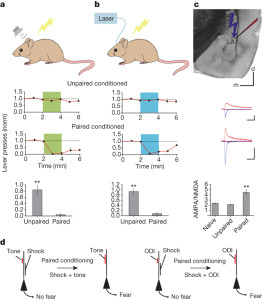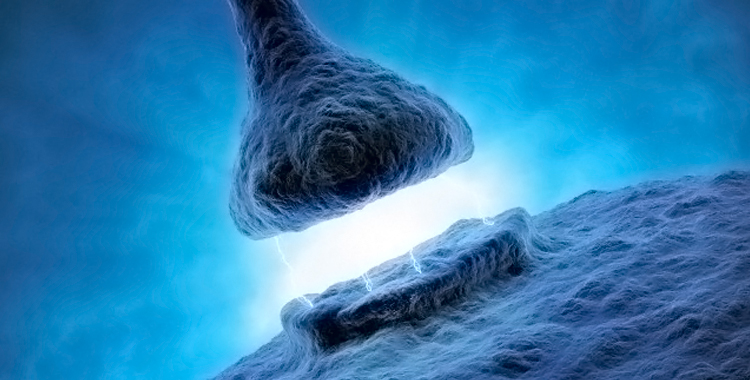Researchers at University of California have demonstrated the ability to create memories, erase them and create them again. The researchers used light-sensitive proteins and optical fibers to enact long-term potentiation between neurons, creating new associations.
“We could do it over and over, once we knew how to do it,” University of California lead researcher Roberto Malinow told The Speaker.
 In the study, researchers prepared the rats by injecting their brains with a virus that had been modified by a gene that produces a light-sensitive protein. The gene, once translated into protein, could be activated by a pulse of blue light delivered by an optical fiber the researchers had implanted in the rats’ brains.
In the study, researchers prepared the rats by injecting their brains with a virus that had been modified by a gene that produces a light-sensitive protein. The gene, once translated into protein, could be activated by a pulse of blue light delivered by an optical fiber the researchers had implanted in the rats’ brains.
Researchers fired a beam of light to the neurons that connect the sound processing region of the brain with a fear-related region, and then shocked the rats with electricity. The action created a memory of fear of sound.
“We can make a memory of something that the animal never experienced before,” Malinow said of the procedure.
The experiment was based on classic conditioning, wherein a tone is played to an animal followed by an electric shock. The animals develop a fear reaction to the tone.
The researchers then sought to erase the fear of sound they had created. They exposed the rats to a sequence of light pulses, which enacted long-term depression between the effected neurons. The rats no longer showed fear when a tone was simulated in the brain.
Fear could be created and erased over and over again, the researchers found. “We were playing with memory like a yo-yo,” stated Malinow.
Although in the study the researchers focused specific instance of memory, Malinow told us that the research had broader, though limited applications. “In our case, we focussed on a very specific memory–one we created artificially. In theory, one could do it to any memory.” However, Malinow told us, in practice it would be very difficult.
Regarding other types of memories, Malinow elaborated, “We don’t know which synapses are modified for any specific natural memory. Even if we did, it would be very difficult to control selectively the activity of just those synapses.”
The method used in the study, long-term potentiation (LPT), was discovered during research experiments in the 1960s and 70s when repeated bursts of electricity to a neuron in the hippocampus seemed to increase the cell’s ability to communicate with a neighboring neuron. Scientists have long theorized that LPT is the basis of memory.
The research has significance in the areas of health, particularly in the treatment of Alzheimer’s. Malinow mentioned several questions the team sought to answer with their research.
“Scientifically, we can use this methodology to probe many unanswered questions about memory,” Malinow said. “Does the material that builds up in Alzheimer’s disease actively remove memories? Can this be prevented? How can we inactivate (unwanted) memories? Is there a combination of drugs and behavioral protocols that could inactivate memories? What is the relation between protocol details and duration of memory?”
The University of California team is currently pursuing some of these issues.
By James Haleavy

Two other pieces of information from Dr Malinow, which might be relevant to those interested in this research:
1. There were potential ways to carry out LPT without the introduction of light-sensitive proteins: with electrical stimulation with electrodes, but this method, he said, ” is pretty non-specific.”
2. The genes carrying these proteins and the virus were not harmful as far as the researchers could tell.